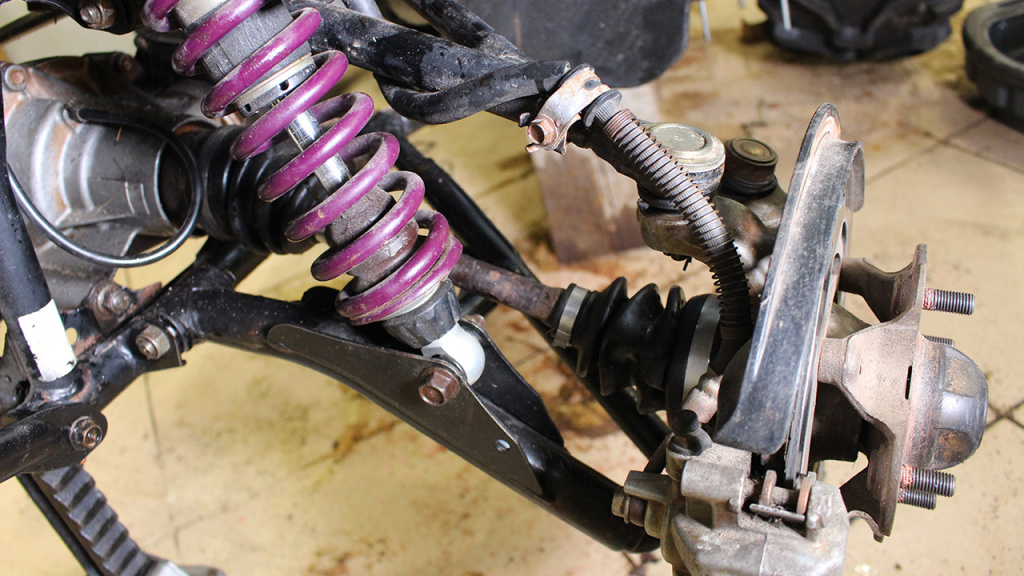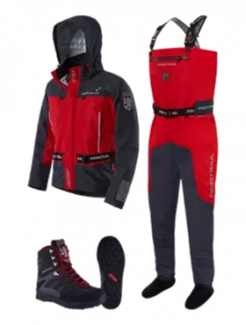An ATV Won’t Move When in Gear – How to Fix It?
It’s a stressful feeling when your four-wheeler will go into gear but won’t budge from the spot. There are quite a number of potential reasons for a lazy ATV, and in this article, we’ll discuss all the main things to check to get your quad moving again.
TEST THE ATV IN NEUTRAL
Let’s work out whether there’s anything in the driveline that’s preventing your quad from moving. Put the ATV back in neutral and push the vehicle forward and back by hand.
If the wheels don’t turn freely even with the support of your most muscular friends, it suggests there’s a problem with the brakes, driveline, or bearings. It’s still possible to be a problem with the gear shifter or transmission, though more unlikely.
If the wheels do spin without issue, you can rule out problems with the brakes or driveline. It would be best if you began by looking at the transmission, skipping the next few steps.

ARE YOUR BRAKES OR WHEEL BEARINGS SEIZED?
If the wheels aren’t turning, use a jack to lift the ATV off the ground. Check each tire to see if there’s any play by wiggling them back and forth. If there is excessive play, your issue likely stems from worn wheel bearings, and you’ll need to replace them.
Take off the tire and try spinning the wheel by hand. If you can’t, check the brakes for corrosion, particularly if your ATV has been sitting unused for a long time. In extreme conditions, brakes can freeze solid, and extensive muddy riding can pack up the brakes.

It’s relatively easy to disassemble, clean, and lube corroded brakes, but for more severe cases of corrosion, you’ll need to replace the brake calipers and brake disks.
If your wheels still don’t turn, disconnect the driveline. If the wheel hub still won’t move, you know the issue lies in the brake assembly or the hub itself. Otherwise, the troubleshooting moves to the drive belt and driveshaft.
CHECKING THE DRIVE BELT

CTV transmission drive belts eventually break due to wear and tear. If you’re out on the trail and suddenly lose movement while you’re in gear, it could be a shredded drive belt that needs to be replaced.
The issue can arise if water gets into the drive belt housing. The friction you need is gone. Normally, the drive belt is encased in housing and kept dry, but if you ride through deep water and the housing isn’t solid, water can get in. To remove any water in the belt housing, drain it using the drain plug on the bottom of the drive belt housing.
If you enjoy riding chest deep in water, invest in the most reliable waterproof shield between your body and exterior moisture.
BROKEN AXLE OR DRIVESHAFT
If you have a big collision, it’s possible to break or strip an axle. The C-clip that keeps it in place no longer performs its function, and you’ll hear scraping noises when you attempt to move forward. You’ll need to replace your axle, and it makes sense to use a heavy-duty axle if you plan to put your ATV through the same type of abuse again.

PROBLEMS WITH THE GEAR SHIFT MECHANISM
When changing gears, if the shifter feels loose, then it may need adjusting. If you need to give the shifter more force than expected to get gears to engage, then you’ll likely need to adjust the gear linkage.
If you have a manual clutch, ensure the cable is adjusted correctly.
If all looks good, there may be a problem within the transmission, such as a broken drive chain or shift fork. You can open the belt cover to see how the components are behaving. ATV transmissions are not all built the same way, so you’ll need to check with a mechanic or consult the manufacturer’s service manual to diagnose which element is failing.
THE REAR DIFFERENTIAL IS LOCKED
A problem differential will also cause an ATV to sit still when you engage a gear and hit the throttle. Check for debris. Visually inspect the mechanism that engages and disengages the differential. If dirt or water has entered the differential, bearings can become worn out. Finally, the differential gears themselves can become stripped. Replacing differential gears is quite a tough job, so let’s hope you’ve already solved your ATV’s issue with the troubleshooting above.






